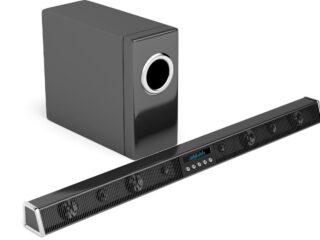
Financial transparency is no longer optional—it’s essential for businesses to build trust and ensure compliance. Modern accounting systems are no longer just about balancing ledgers and tracking expenses. Instead, they are leveraging cutting-edge technologies to create more visibility, accuracy, and efficiency across financial operations.
As businesses evolve, so too must their financial processes, with the Record to Report (R2R) function at the heart of it all. Traditionally, R2R involved labor-intensive tasks and manual reconciliations, but today, emerging technologies are streamlining these processes, enabling real-time financial visibility, reducing errors, and strengthening compliance.
Companies are increasingly turning to new technologies to streamline financial operations and enhance visibility. In this blog, we’ll explore how key technological advancements are transforming the R2R process and reshaping the future of financial transparency.
Cloud-Based Infrastructure: Enabling Real-Time Visibility
Modern R2R systems are increasingly cloud-based, which provides numerous advantages for finance teams. A cloud-based infrastructure reduces IT overhead, mitigates technology risks, and enhances productivity by allowing teams to access financial data from anywhere. Cloud platforms ensure that financial updates are processed in real time, making collaboration between departments seamless, regardless of location. Additionally, automatic updates for security patches and legal changes ensure that organizations stay compliant without disrupting operations.
End-to-End Financial Streamlining: Automating Core Functions
Emerging technologies enable modern accounting systems to automate and streamline essential financial functions within the R2R process. Functions like accounts payable, accounts receivable, financial close, reconciliation, and revenue recognition can be automated to reduce manual work. This automation improves the accuracy and speed of financial operations, allowing finance teams to focus on strategy and analysis
instead of routine tasks. By automating these processes, businesses can ensure faster and more transparent financial reporting.
Automated Bookkeeping: Reducing Human Errors
Automation is at the core of modern bookkeeping, eliminating the need for manual data entry. From updating general ledgers and tracking asset depreciation to tax calculations and error prevention, automation ensures that day-to-day accounting tasks are handled efficiently and with minimal human intervention. This not only reduces the likelihood of human error but also ensures a consistent and transparent financial reporting process.
Proactive Anomaly Detection: Preventing Errors Before They Happen
Advanced accounting software now leverages AI and machine learning (ML) to detect anomalies in financial data in real time. These systems can identify accounting errors, omissions, or deviations from normal patterns, enabling finance teams to address issues before they escalate into significant problems. By catching these discrepancies early, businesses maintain higher levels of accuracy in their financial reports, improving transparency and trust.
Enhanced Security Measures: Safeguarding Financial Data
Security is a critical factor in ensuring financial transparency, especially with the sensitive nature of financial data. Modern R2R systems come equipped with robust security features, including encryption, multi-factor authentication, and regular audits.

These systems protect data from unauthorized access while maintaining the integrity of financial information. Strong security measures help organizations build trust with stakeholders by ensuring that financial data remains confidential and secure.
Seamless Integration Capabilities: Ensuring Cohesive Data Flow
Integration is key to an efficient R2R process. Modern accounting software must integrate seamlessly with other financial and operational systems, such as ERP platforms. This ensures that data flows effortlessly between departments, reducing the risk of data silos and improving the accuracy of financial reports. With streamlined
integration, businesses can automatically extract financial data from various sources, improving transparency by ensuring that all reports are based on consistent, accurate data.
Workflow Alignment: Enhancing Operational Efficiency
Accounting software must be flexible enough to align with an organization’s specific workflows. By customizing workflows and processes, businesses can optimize routine tasks while deriving actionable insights from financial data. This ensures that the R2R process not only meets regulatory requirements but also empowers finance teams to make data-driven decisions that align with overall business strategies.
Detailed Financial Reporting & Projections: Driving Data-Driven Decision-Making
Advanced accounting software should enable businesses to generate detailed financial reports and projections. By leveraging analytics and data visualization tools, these systems provide insights into current financial health and future trends, helping businesses make informed decisions. Detailed reporting fosters transparency, enabling organizations to provide stakeholders with clear, actionable information that enhances trust and accountability.
Maximizing Financial Efficiency with the Right Record to Report Software
Technology is continuously evolving, and businesses that adopt the latest advancements stay ahead in promoting transparency.
Adopting the right Record to Report software is key to staying ahead in today’s rapidly evolving financial landscape. The latest R2R solutions, equipped with advanced technology, can help organizations streamline and automate their accounting processes, reducing manual work, increasing accuracy, and improving transparency. By leveraging cloud-based platforms, automation, and AI-driven insights, companies can reduce the time it takes to close their books by up to 30%, allowing for faster decision-making and more reliable financial reporting.

Investing in the right R2R software doesn’t just keep businesses compliant—it transforms their financial operations, providing a competitive edge through improved efficiency, enhanced security, and seamless integration. With the right tools in place,
businesses can fundamentally reshape their accounting processes and future-proof their financial transparency.
.










